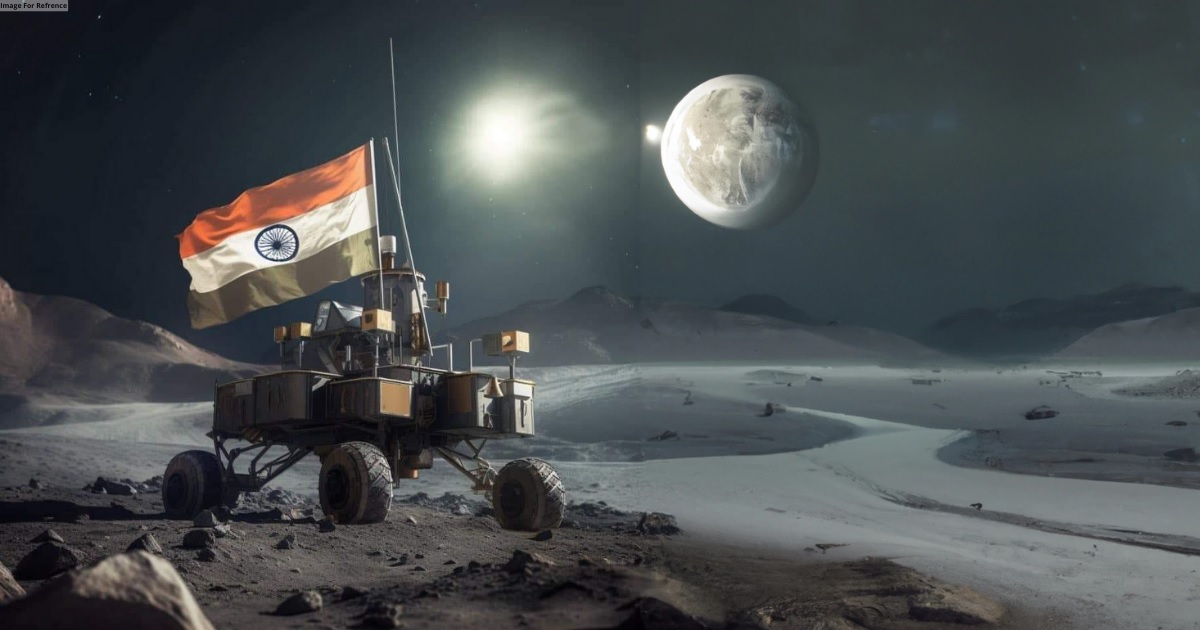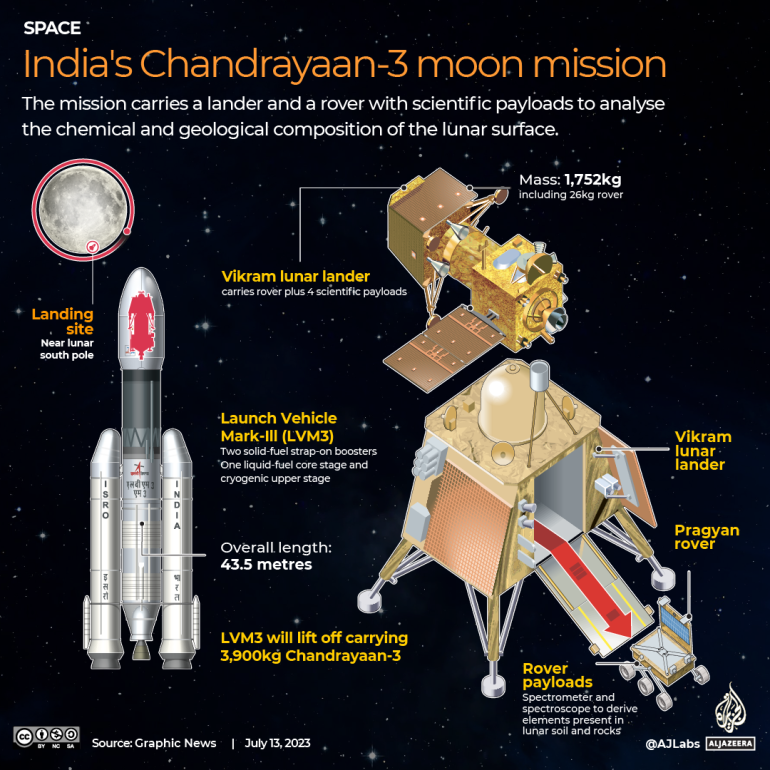Chandrayan 3, the moon mission of India has scripted history, as it become the first nation to land a spacecraft on moon’s south pole.
With the Lander accomplishing a ‘soft landing’ on the south pole and a Rover, a small vehicle meant to move around the moon came out of the lander the Indian Space Research Organization (ISRO) released a video on August 24th.
About six weeks ago, the mission was launched amid the enthusiastic cheers of numerous onlookers. However, its journey to the Moon contrasted significantly with the expedited trajectories of the Apollo missions conducted by NASA in the 1960s and 70s. Unlike those missions that reached the Moon within a few days, the current mission experienced a notably extended travel duration.
This disparity in travel time might be attributed to India’s utilization of less potent rockets compared to the ones used by the United States during that era. Consequently, the spacecraft had to complete multiple orbits around Earth to accumulate sufficient velocity before commencing its month-long journey towards the Moon.
Vikram, the spacecraft’s lander, the term which refers to ‘valor’ in Sanskrit, detached from its propulsion module last week and has been sending back images of the moon’s surface since it entered lunar orbit on August 5th.
What is Chandrayaan-3 Mission?
The mission aimed at the lunar south pole, a region with water ice, or frozen water, that could be a source of oxygen, fuel and water from future moon missions or a more permanent moon colony.
As per the Indian space research agency, the mission has three objectives to demonstrate, foremost was the ‘soft landing’ on the lunar surface, to demonstrate a rover moving on the Moon and then it is expected to remain functional, running a series of in-situ scientific experiments including a spectrometer analysis of the mineral composition of the lunar surface.
Why ‘soft-landing’ is crucial?
Soft landing refers to the carefully controlled descent and subsequent gentle touchdown of a spacecraft onto the lunar surface, minimizing any substantial damage to the craft. This achievement highlights the spacecraft’s technical prowess.
However, the challenges are not confined solely to covering the vast distance between Earth and the Moon. As described by the head of ISRO, the 15-minute period of soft landing is often referred to as the “15 minutes of terror.”
During this critical phase, the lander must execute precise engine firings at specific times and altitudes, manage fuel consumption meticulously, accurately scan the lunar terrain including hills and craters, and ultimately achieve a successful landing.
It’s important to note that this entire process is conducted autonomously, meaning that the space agency, ISRO, has limited ability to directly guide the lander from Earth.
Adding to the complexity, the chosen landing site is situated near the lunar south pole, at a latitude of 70 degrees.
South pole of the Moon
All prior lunar landing missions have chosen to touch down in the vicinity of the Moon’s equator due to the ease and safety afforded by this choice. The landscape and temperature in this equatorial region provide a more favorable environment for extended instrument operations.
The consistent presence of sunlight in equatorial areas ensures a continuous supply of energy for solar-powered instruments.
In contrast, the polar regions pose substantial challenges. Notably, significant portions of these polar zones are shrouded in perpetual darkness, devoid of sunlight, and experience plummeting temperatures that can dip below -230 degrees Celsius.
These factors, combined with the prevalence of larger craters, create formidable obstacles for instrument functionality. These formidable challenges, alongside the rugged terrain, contribute significantly to the limited exploration of the Moon’s polar regions.
What is interesting about the polar regions?
The polar regions hold an intriguing aspect due to their extremely low temperatures, which might result in preserving objects in a frozen state over time, undergoing minimal alterations. Consequently, rocks and soil found in these polar areas have the potential to offer insights into the early stages of the Solar System.
Notably, in 2019, Chandrayaan-2 also targeted a landing in this polar region. Regrettably, it couldn’t achieve a gentle touchdown and lost communication upon impact with the surface. Subsequent investigations revealed issues with both software and hardware components in Chandrayaan-2’s 2019 mission.
Consequently, the lessons drawn from this setback were prudently integrated into the Chandrayaan-3 mission. For instance, the current lander’s legs were reinforced to enable a secure landing and stabilization, even at a speed of 3 meters per second, learning from the 2019 lander’s crash speed of around 580 km/hr.
Additionally, the potential landing area was expanded for the present mission. Unlike the previous attempt, where a specific landing point was targeted, the current mission was instructed to ensure a safe landing within a broader zone of 4kmx2.4km area.
What scientific experiments are associated with present mission?
The current mission is accompanied by specific scientific investigations that involve payloads—tools and experiments designed to observe and document various phenomena in space. There are six distinct payloads connected with this mission.
Their objectives encompass tasks such as capturing data about the polarization of light as it’s reflected from Earth, analyzing the thermal characteristics of the lunar surface and its temporal variations, investigating moonquakes occurring around the landing area, and gaining insights into the intricate dynamics of the lunar system.
Conclusion
For an extended period, India has had a rich history in space exploration, progressively achieving success while drawing important insights from the setbacks encountered during the Chandrayaan-2 mission.
The Chairperson of ISRO, S Somnath, aptly highlighted that the modifications to the ongoing mission were derived from past failures. Unlike the “success-focused approach” of Chandrayaan-2, Chandrayaan-3’s design is rooted in learning from failures, concentrating on anticipating potential issues and developing strategies to address them.
Having made a significant mark on lunar exploration and establishing a notable position in the global space race, India now faces the critical challenge of leaving a positive impact on the environment. It’s essential to keep up with the urgent pace of global warming and climate change, just as the country has in the field of space exploration.



